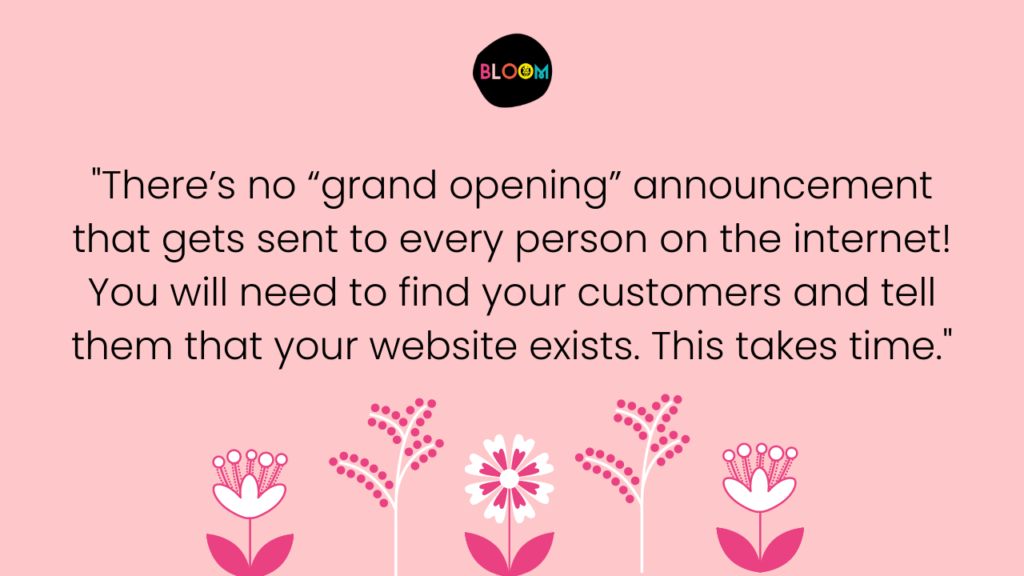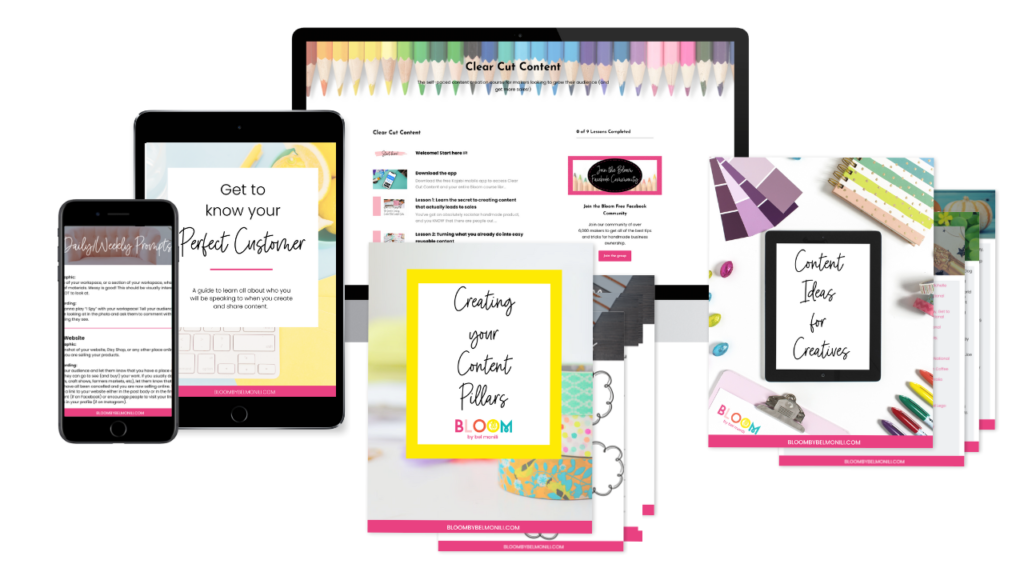Your go-to guide to mastering your in-person market experience
Freebie alert: Market Must-Haves for Makers
Blog Categories
An exclusive online membership for makers and creative business owners ready ditch the overwhelm and hustle for consistent sales and flexible schedules.
The Marketing School for Makers
Membership
Hi! I’m Lucy.
Chardonnay and vintage finds lover, founder of the handmade jewelry brand bel monili *and* your new guide to making your handmade business WORK online.
Hey, I'm Lucy
Should You Still Be Selling On Etsy in 2024?
Filed under:
There’s no denying that Etsy is the most visited website for handmade goods. If you’re looking for unique, hand crafted anything – you go to Etsy, right? But with recent fee increases and a flooded market, you may be wondering if you should still be selling on Etsy.

The short answer is yes! But the longer answer is “maybe”. Totally not confusing, right?
Read on to see why my answer is not so clear cut.
Disclosure: some of the links below are affiliate links, meaning, at no additional cost to you, I will earn a commission if you click through and make a purchase.
Selling On Etsy Brings New Customers
Getting traffic and customers to an e-commerce site is one of the hardest parts of running an online business. It can also be rather expensive!
I am a huge fan of having your own online shop through a site like Shopify. However, I also recognize that it’s a lot of work, especially when you’re starting from scratch.
So selling on Etsy gives you the chance to get your work in front of your customers. Etsy is a well-known website and brings millions of people to its “doors” every day. In 2023 the website boasted over 96 million visitors!
Do you still need to work on getting traffic to your Etsy shop? Yes, of course. But it’s a little easier, since the traffic is already coming to Etsy itself.
Pssst…here’s a bonus tip. Use your Etsy customers to build your customer list, and then convert them to your website customers!

Selling On Etsy Gives You Experience
Many crafters and handmade sellers get their start selling in-person. Selling online is completely different, and can be overwhelming.
There’s the element of technology that plays a HUGE part in getting an e-commerce business started. And if you’re going out on your own, you’ll need to learn about setting up a website, SEO, PPC ads, processing postage, and more.
It’s a LOT.
Opening an Etsy shop takes care of most of that for you. You only need to learn how to list an item, and once you do it, it’s a “rinse and repeat” process.
The traffic to the site is already there. If you want to run ads, they make it super easy to do so. And you can purchase your postage for your orders right on the site.

Start getting some sales and you get experience processing orders, shipping your items, conducting customer service over messages and email, and all the other “businessy” things that go into running an online shop.
Selling On Etsy Can Be Cheaper
Even with their fee increases, selling on Etsy is relatively inexpensive compared to other online platforms.
You pay $0.20 to list an item for four months. If it sells and you relist it, you will then get charged another $0.20.
Once you sell an item, you’ll pay Etsy 6.5% of the final price (which includes what you charge for shipping and gift wrapping).
While this is a considerable amount, it is the cost of doing business on a large, well-known platform. You are paying for a “made for you” online shop, plus the traffic that Etsy brings in every single day.
If you use a formula to come up with your pricing, you can factor in these fees and make sure you’re covered so you still make a profit at the end of a sale.

Conversely, a shop on Wix or Shopify will cost you anywhere from $23 a month to $79 a month. On top of that, you’ll need to pay for payment processing, and those fees will be taken out after you make a sale.
This does not factor in any marketing, however. For your own website, you’ll need to either work on social media or pay for ads to get traffic to your site.
So in the beginning when you’re not making a lot of sales, it would make sense to use Etsy to get your business going.
Remember in the beginning of this article I said my answer was “yes, but also maybe”? Here’s why…
Selling On Etsy Might Not Be The Best Option For You
Once you get to a certain level of sales, those Etsy fees will start to sting!
Also remember, you are essentially “renting” a shop on someone else’s platform. You need to abide by their rules, and if they change things (such as search algorithms), you are at their mercy.
So the time will come when you will want to move your site to your own URL and website.
However, many handmade business owners don’t get rid of their Etsy shop altogether. They will curate a collection of their items that perform well and keep them on Etsy, while also running their own website.
This is the best of both worlds!

I have my Bel Monili Shopify site AND I have an Etsy shop. I work on converting my Etsy customers to shop from my website directly.
I have a greater selection of items on my website. I love Shopify’s interface, themes and back-end information.
So having both shops can be a great boost for your business, and allow you to then “collect” customers and convert them into repeat buyers from your website.
Should You Still Be Selling On Etsy in 2024?
My advice is yes, if you don’t have another option – BUT do it with a plan to open your own website and convert your Etsy customers over time.
Fees are a cost of doing business, so factor them into your pricing and you’ll be able to sell on Etsy while still making a profit!
Ready to get online and bloom? Get a jump on creating content that will bring more of the RIGHT people to your own website with my self-guided program, Clear Cut Content.

Leave a Reply Cancel reply
You are in the right place, my creative friend!
After running bel monili (my handmade jewelry business) for 10 years, I launched Bloom in 2019 to create a community where handmade business owners could learn, grow, and support each other in this wild venture of small business ownership. Welcome to Bloom!
Join The MArketing School for Makers
follow
pin it
'Gram
watch
@bloombybelmonili
Thank you for this. I have tried to get my children to help me do this. But they are busy in their own lives. Do I have to figure all this out myself. And I found you. Thanks again
Nice clear, concise explanation.
One thing to note: you actually pay the processing fees to Etsy too, just as you would with a separate web site like Shopify. 2.9% CC processing, 6.5% platform fee, 20 cents to list – that’s the cost for *each* Etsy listing. Works out to about 9.4% of every sale.